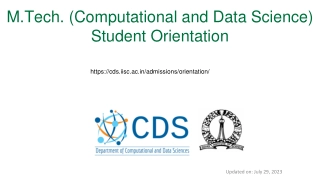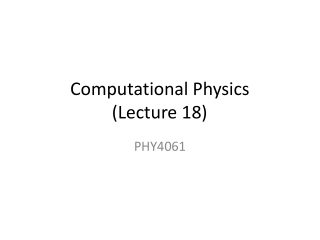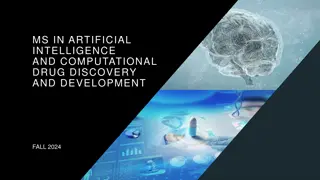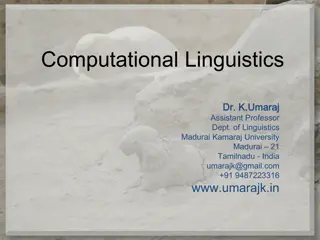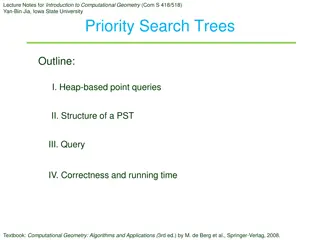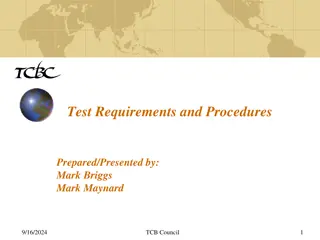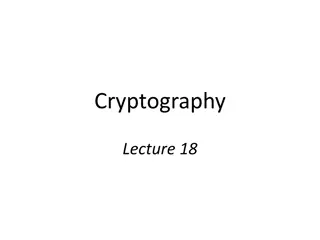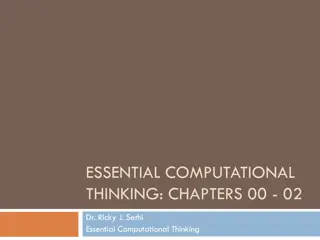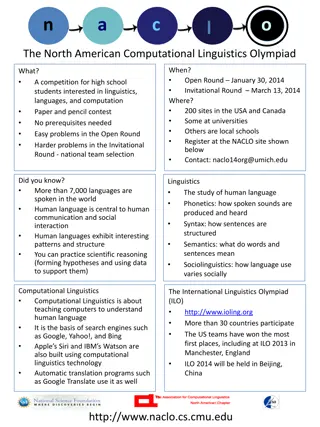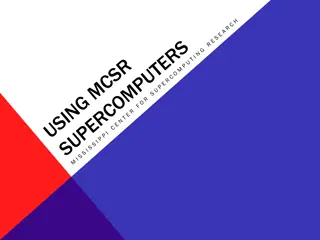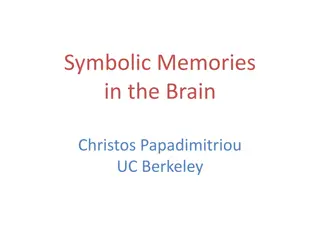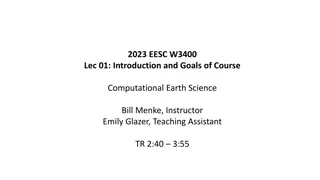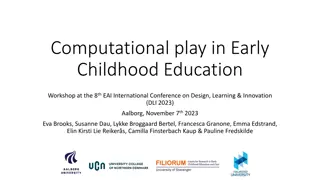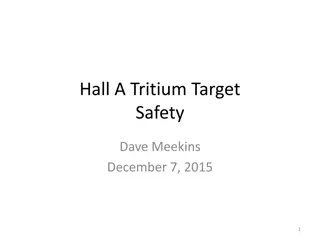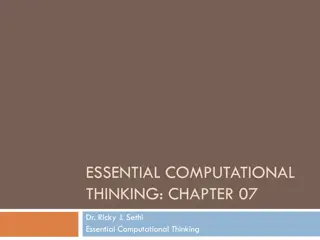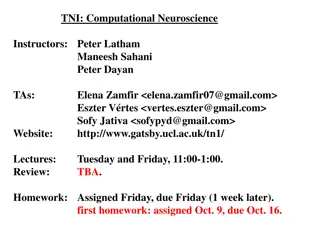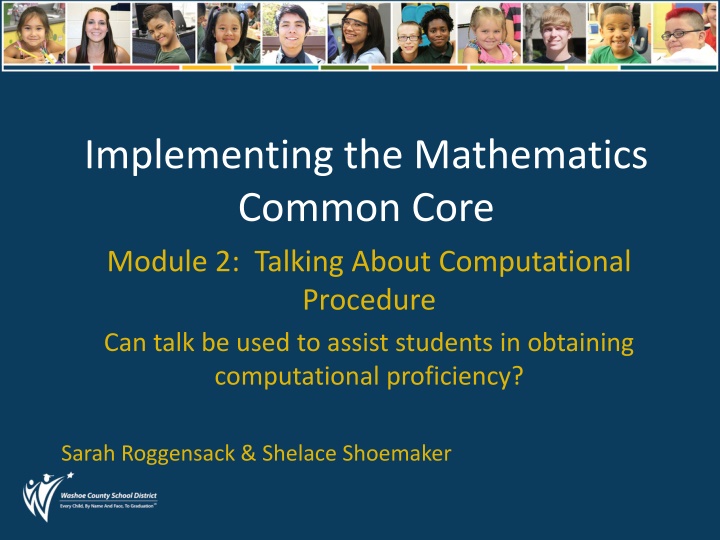
Enhancing Mathematics Learning Through Productive Talk on Computational Procedures
Explore how classroom discussions can assist students in acquiring computational proficiency by building connections between procedures and concepts, using computational skills as problem-solving tools, and deepening reasoning through productive talk strategies.
Download Presentation

Please find below an Image/Link to download the presentation.
The content on the website is provided AS IS for your information and personal use only. It may not be sold, licensed, or shared on other websites without obtaining consent from the author. If you encounter any issues during the download, it is possible that the publisher has removed the file from their server.
You are allowed to download the files provided on this website for personal or commercial use, subject to the condition that they are used lawfully. All files are the property of their respective owners.
The content on the website is provided AS IS for your information and personal use only. It may not be sold, licensed, or shared on other websites without obtaining consent from the author.
E N D
Presentation Transcript
Implementing the Mathematics Common Core Module 2: Talking About Computational Procedure Can talk be used to assist students in obtaining computational proficiency? Sarah Roggensack & Shelace Shoemaker
1. Whole class discussions can help students use computational procedures in accurate and efficient ways. 2. Discussion can help students build connections between procedures and their underlying concepts. 3. Classroom discussions can help students think of computational skills as tools that can be used to solve a wide variety of problems. 4. Learning based on memorization is often forgotten and not readily transferred. 3
Four Steps Toward Productive Talk Helping Individual Students Clarify and Share Their Own Thoughts Helping Students Orient to the Thinking of Others Helping Students Deepen Their Own Reasoning Helping Students Engage with the Reasoning of Others 4
Essential Questions What strategies can we use to enhance our instruction so students learn mathematics with understanding? What does this look and sound like? Objective Explore how discussion enhances learning opportunities to meet the computation procedures found in the Mathematics NACS. 5
Guiding Question How can productive talk be used to assist students in obtaining computational proficiency? 6
Computational Strategy A method where the numbers in a computation are manipulated in order to create an equivalent but easier computation. Definable features: The steps involved change depending on the specific numbers involved Offer efficient and accurate ways to compute 8
Computational Algorithm A generalized set of steps used to perform computations. Definable features: They are efficient Produce accurate results Can be used to perform many computations using the same process 9
Strategy vs. Algorithm Hunt In each grade level indicate whether students are using a strategy (S) or an algorithm (A) as directed by the standards. Make additional notes regarding strategy vs. algorithm work for whole and rational numbers . Addition Subtraction Multiplication Division Kinder 1st 2nd 3rd 4th 5th 6th 10
Strategy vs. Algorithm Hunt answers Addition Subtraction Multiplication Division Kinder S S 1st S S S 2nd S & A S & A S S 3rd A A S S 4th A A A: multi-digit whole numbers S: decimals to hundredths S S: decimals to hundredths S: decimals to hundredths 5th A A A A 6th multi-digit numbers & decimals multi-digit numbers & decimals multi-digit numbers & decimals multi-digit numbers & decimals 11
K 1 2 3 4 5 6 Whole Number Addition and Subtraction C P S Whole Number Multiplication C P S Whole Number Division C P S Fraction and Decimal Addition and Subtraction C P S Fraction and Decimal: Multiplication and Division C P S Development of Conceptual understanding of addition, subtraction, multiplication and division C Development of Procedures including fact fluency and algorithms P Expectations of Security of concepts and procedures S 12
Three Suggestions for Whole Class Discussion on Computational Procedures 1. Use whole-class discussions to teach computational procedures. 2. Use whole-class discussion to connect computational procedures to concepts. 3. Use whole-class discussion to build number sense skills. 13
Implications for Suggestion 1: Use whole-class discussions to teach computational procedures. Classroom discussions should center on student explanations about the ins and outs of computational procedures including why mathematically they can perform certain steps (Chapin, O Connor, Anderson) 14
Change in Practice: I Can Statements Instead of I can demonstrate how to use lattice to solve multi-digit multiplication problems. modify to.. I can explain why lattice works when solving multi-digit multiplication problems. 15
Change in Practice: Objectives Instead of Demonstrate how to use lattice to solve multi-digit multiplication problems. modify to.. Explain why lattice works when solving multi-digit multiplication problems. 16
Change in Practice: Guiding Questions Instead of How can you use lattice to solve multi-digit multiplication problems? modify to.. Why does lattice work when solving multi-digit multiplication problems? 17
Norms for Viewing Records of Practice Assume that there are many things you don t know about students, and the shared history of the teacher and students in the video. Assume good intent and expertise on the part of the teacher. Keep focused on your observations about what student are getting out of the talk and interaction. Keep focused on how the classroom discourse is serving the mathematical goals of the lesson. 18
Guiding Questions What was the benefit of using talk to compare the different subtraction strategies? How did that build the students number sense skills? What evidence did you observe indicating that students number sense skills were developed? 19
Breakout activity options Select a standard and review/visit list of resources to build your toolbox of strategies on that standard. OR Select a standard to plan a lesson/s utilizing the steps for whole classroom discussion on computational procedures of a strategy/ algorithm. 20
Three Suggestions for Whole Class Discussion on Computational Procedures 1. Use whole-class discussions to teach computational procedures. 2. Use whole-class discussion to connect computational procedures to concepts. 3. Use whole-class discussion to build number sense skills. 21
SBAC Implications How do these suggestions for whole class discussion support what students will be required to do independently on the SBAC? 22
Instructional Practice Guide (IPG) Correlations Which indicators may be observed during a productive mathematical discussion focused on computational procedures? What might evidence observed and gathered look like? 23
Stop and Jot Exit Ticket Stop and Jot: Instruction about Computational Procedures Whole class discussions can help students use computational procedures in accurate and efficient ways. Discussion can help students build connections between procedures and their underlying concepts. Classroom discussions can help students think of computational skills as tools that can be used to solve a wide variety of problems. Learning based on memorization is often forgotten and not readily transferred. 24

